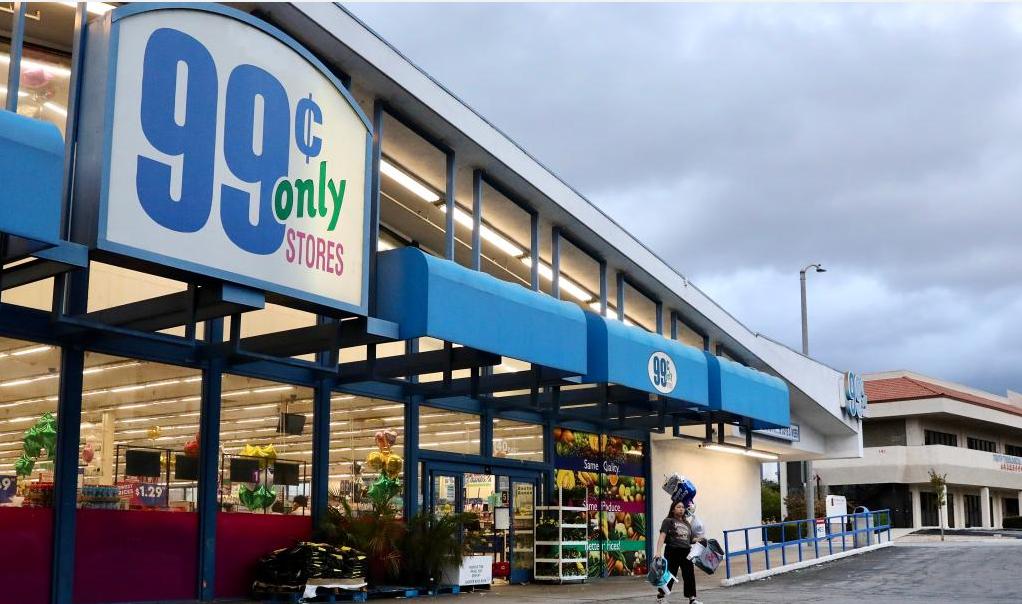
Recently, American discount retailer 99 cent store filed for bankruptcy protection. According to previous reports, this retailer with approximately 14000 employees announced that it will close all 371 stores and gradually end all operations.
The 99 cent store went bankrupt, which is heartbreaking. The 99 cent store was founded in 1982 and was famous for selling the vast majority of products for only 99 cents or even lower. With its high-quality and affordable products, 99 cent stores quickly became popular in the United States, not only capturing a large number of middle and low-income people, but also many middle-class and wealthy families in the United States are willing to go to the store to pick up leaks, because 99 cent stores are not only a good place for low-income families to save money, but also a treasure trove for finding small joys in life. In these stores, customers can purchase a variety of goods for less than a dollar, covering almost every aspect of life, from daily food and cleaning products to small appliances, stationery, etc. The high cost-effectiveness of the products has made the 99 cent store highly favored and sought after by American consumers. However, over time, in the face of economic changes and market challenges, the 99 cent store gradually found its consistent low price strategy unsustainable.
However, in recent years, due to factors such as escalating inflation and rising wages in the United States, the profits of retailers in this already extremely low profit margin deep discount industry have been reduced. Some items in the 99 cent store have seen a significant increase in price, with most items in the store priced much higher than $1. Mike Simoncich, interim CEO of 99 Cent Store, said that in the past few years, the retail industry has faced major and continuous challenges. The impact of the COVID-19, changes in consumer demand, sustained inflationary pressure and other factors have seriously affected the company's operating ability.
On the one hand, the current macroeconomic environment in the United States is under significant pressure, with increasing operating costs such as logistics and labor. However, the purchasing power of low-income groups in the United States is severely shrinking, and almost all low-priced retail industries in the country will face collapse pressure. On the other hand, the operating model of 99 cent stores is facing social pressure. Recently, more than 70 towns have rejected plans for $1 stores to settle in their areas, and over 50 US cities have enacted laws restricting the expansion of $1 store chains.
In response to high inflation, the Federal Reserve raised interest rates 11 times from March 2022 to July 2023, pushing them to the highest level in 23 years. Analysts say that the continued weak performance of US retail business will accelerate its passive transformation.
The continuous interest rate hikes by the Federal Reserve have had a huge impact on various industries. The latest report shows that in 2023, a total of 642 companies in the United States filed for bankruptcy, reaching a new high in 13 years, an increase of 72% compared to 2022. Specifically, most of these bankrupt companies have experienced difficulties such as crazy expansion and financing obstacles, and the Federal Reserve's interest rate hikes have become the last straw that crushed the camel. They have all embarked on the path of being unable to make profits, breaking their capital chains, and eventually going bankrupt.
Since the beginning of this year, the inflation rate in the United States has decreased from its peak, but the Federal Reserve has been hesitant to let go of its stance on the interest rate reduction cycle. Federal Reserve Chairman Powell recently issued a warning that premature interest rate cuts may have a destructive impact on the US economy. He stated that the US economy is currently facing dual risks, with too fast a rate cut potentially triggering inflation again, while too slow a rate cut could put pressure on economic growth and potentially trigger a recession. It seems that the bad situation for American retailers will continue. The closure of the 99 cent store not only affected many employees and their families, resulting in an increase in unemployment rates, but also reflected the difficulties faced by businesses in the current economic environment in the United States.

At the beginning of 2026, a geopolitical game around Greenland suddenly heated up: Denmark proposed the normalization of NATO troops stationed on the island, Germany, France, Britain and other countries announced the dispatch of military personnel, the United States reiterated its "security interests" in Greenland, and Russia immediately issued a strong warning.
At the beginning of 2026, a geopolitical game around Greenl…
Amidst the numerous challenges already facing the global ec…
Apple's iPhone is the most popular smartphone in the United…
On January 20, 2026, the European Parliament announced the …
On January 21st, 2026, the European economy stands at the i…
Recently, the fierce clash between the United States and Eu…